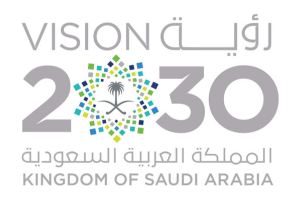the difference between a target market and a target audience and how to identify both
the table of contents:
introduction
what is a target market?
what is a target audience?
the difference between a target market and a target audience
how to combine target market and target audience to design an effective strategy
introduction:
in the modern marketing world, defining a target market and a target audience are key elements that contribute to the success of any marketing campaign. although these two concepts are very similar, each has a different role to play in marketing strategies. a target market reflects the bigger picture of potential customers, while a target audience is more specific and focused. by understanding the difference between the two, brands can design more precise and effective marketing strategies that ensure they reach those who are most interested in the products or services offered.
1. what is a target market?
a target market is the wide range of potential customers who could buy your product or benefit from your service. a target market includes multiple segments based on demographic, geographic, and behavioural factors.
how to define your target market:
– Comprehensive market analysis:
study the market in terms of size, trends, and opportunities.
o Example: if you sell healthy food products, your target market could be all health-conscious individuals.
– Segment the market:
identify subgroups based on age, gender, geographic location, income, and interests.
o Example: segmenting the market into categories such as young athletes or mothers looking for nutrition for their children.
– Competitor analysis:
study the customers targeted by competitors to find the most appropriate segment to target.
– Assess the needs of potential customers:
identify the issues that your product or service can solve for potential customers.
o Example: if you offer delivery services, customer needs may be speed and reliability of delivery.
– Use data and statistics:
analyse available data such as market reports and statistics to understand market trends and customer behaviours.
o Example: use past sales data to determine which segments are most likely to buy your products.
– Identify social and cultural trends:
o Understand how social trends, such as increased health awareness or the trend for eco-friendly products, affect the market.
o Example: if you sell cosmetics, you can target groups that favour natural and chemical-free products.
– Use digital analytics tools:
make use of tools such as Google Analytics or social media to analyse customer behaviours and identify buying patterns.
o Example: analyse the interaction with ads on platforms like Facebook to identify the audience interested in your products.
– Predicting future market growth:
studying factors that may lead to an increase in demand for your product or service over time.
o Example: if you offer e-learning solutions, your target market may expand as the adoption of distance education increases.
2. what is a target audience?
a target audience is the most defined and specific segment of your target market. a target audience includes people who are most likely to purchase a product or service based on their needs or interests.
how to identify your target audience:
– Identify audience needs:
o Understanding the issues or needs that your product can solve.
o Example: if you offer a language learning app, your target audience might be young people who need to learn a new language for work or study.
– Use behavioural data:
analyse customer behaviour online, such as searches, interactions with content, or previous purchases.
– Personalise the marketing message:
identify the marketing approach that best suits the target audience.
o Example: using social media to reach a young audience, or email to communicate with business people.
– Segment the audience based on values and interests:
understand the values the audience holds dear and the activities they are interested in.
o Example: if you sell sustainable products, your target audience may be people who are interested in the environment and environmental awareness.
– Analyse the audience’s preferred channels:
identify the means and channels through which the target audience interacts with products or services.
o Example: young audiences are highly engaged through apps such as Instagram and TikTok, while professionals prefer platforms such as LinkedIn.
– Use demographic analysis in depth:
segment your target audience based on age, gender, education, marital status, and geographic location.
o Example: if you sell educational products, your primary audience may be parents with school-aged children.
– Identify priorities and buying behaviours:
o Understanding the priorities that influence purchase decisions, such as price, quality, or brand.
o Example: if you sell tech devices, an audience that is interested in innovation may look for modern products and high specifications.
3. the difference between a target market and a target audience
element
target market
target audience
scope
a broad group that includes multiple segments
a specific segment of the target market
analysis
based on demographic and geographic factors
focuses on behaviour and interests
application
used to identify general categories
used to design marketing campaigns
example
all individuals interested in fitness
young people who prefer personal training
4. how to combine the market and target audience to design an effective strategy
a) Start by analysing your target market:
collect comprehensive data to determine the general characteristics of your potential customers.
example: if you’re selling tech products, your target market might include young people and tech-savvy professionals.
b) identify the target audience within this market:
use detailed data to determine which customers are most likely to buy.
example: within the tech products market, the target audience could be young people looking for affordable mobile phones.
c) customise the marketing message:
target your marketing campaigns to your target audience using a style that suits their needs and expectations.
example: advertise on social media to reach the youth, focusing on promotions.
d) choose the right marketing channels:
– Identify the channels where your target audience is most likely to be present.
– Example: using adverts on YouTube to reach young audiences who prefer watching videos rather than reading content.
e) Personalise your products or services:
– Tailor your products or services to suit the needs of the audience within your target market.
– Example: offer different versions of a product with different sizes or features to cater to different market segments.
f) evaluate the strategy periodically:
– Use performance analysis tools to evaluate the success of the marketing strategy and the extent to which it is reaching the target audience.
– Example: monitor audience engagement with social media advertising campaigns and adjust messages or channels accordingly.
valeo’s feasibility studies and business solutions in defining the target market and audience
feasibility studies and business solutions are critical tools in defining your target market and audience accurately and effectively. through in-depth analysis of markets and customer needs, organisations can identify the most targeted customer segments and sustainably focus marketing efforts.
from understanding market size, trends, and customer needs to identifying opportunities, feasibility studies provide a holistic view of the target market. through these studies, the demographic, geographic, and behavioural patterns of potential customers can be scientifically determined, allowing the market to be segmented into targetable segments.
business solutions in target audience segmentation are done by accurately analysing customer behaviour and needs. the solutions provided contribute to segmenting the target audience based on their personal interests and values, and personalising marketing messages in a way that ensures effective reach.
combining feasibility studies with business solutions gives businesses the ability to target the market and audience more accurately and effectively. by integrating these tools, marketing strategies can be optimised, return on investment can be increased, and potential risks can be minimised.
all in all, using feasibility studies and business solutions to identify the target market and audience allows for informed decision-making that ensures success and sustainable growth in any business.

in conclusion, the integration of feasibility studies and business solutions is the foundation upon which any successful business is built. by accurately defining the target market and audience, businesses are able to direct their marketing efforts more effectively and efficiently, ensuring they make the most of the opportunities available. making decisions based on these studies helps minimise risks and maximise returns, and promotes long-term sustainability and growth. investing in these tools is a strategic step towards success in a competitive business world.
don’t hesitate to reach out to us via WhatsApp or call us anytime, we are always here to serve you!
read also: feasibility studies for projects based on the circular economy.





